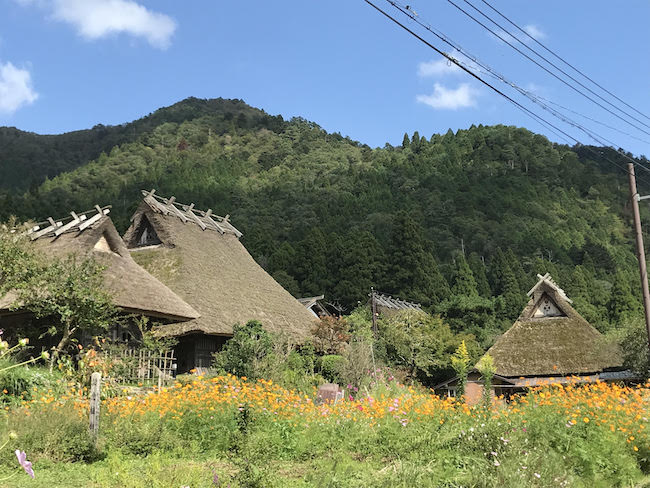Oct 15, 2018
Day Trips: Miyama, Kyoto’s Mountain Retreat

Just 30 kilometers from the hustle and bustle of the tourist mecca that is Kyoto city sits Miyata, a beautiful little hamlet that could have come straight out of Edo era Japan.
Remote, rural and nestled into the mountains, Miyata is famous for its traditional, thatched roof (kayabuki) farmhouses of which over 200 can be seen throughout the countryside. Unlike other such places, including Shirakawa-gō and Gokayama, these old houses are all primarily functioning homes, with the locals still going about their business in the community.
Kayabuki no Sato
As you pass through the area of Miyata, you will come across these farmhouses all along the Yura Valley, but to get a truly authentic feel for the rural village of old, a visit to Kayabuki no Sato is a must. The small hamlet has around 40 thatched roofed giving it the highest percentage of thatched-roof houses of any place in Japan.

Although most of these buildings are residential (meaning it’s not exactly cool to go wandering into someone’s house), you can have a look around the Kayabuki no Sato Folk Museum. This former residence displays traditional household items and tools alongside exhibitions on the construction of the thatched roofs. Down the road, you can also visit the Little Indigo Museum that is both a dying studio and gallery featuring the art of Hiroyuki Shindo.

If you find yourself becoming weary as you wander around the hamlet, you should make your way to cafe Milan, a lovely little place that is famous for its fresh eggs and their delicious ‘purin’ (Japanese pudding) which is, perhaps not coincidentally, the name of the owner’s adorable dog.
Hiking in Miyama
Once sustained by a purin or an ice cream at Cafe Milan, and if you are feeling adventurous, there are some serious trekking trails through the mountainous Ashiu Forest, home to monkeys, bears, and deer. As the forest is a research facility for Kyoto University, it requires a permit to enter, which can be picked up from the research station at the entrance gate. Guided tours of the forest are available with a reservation, and are recommended as much of the area is restricted.
For a less strenuous walk there is a trail along the Yura river that runs for about two kilometers from the Kayabuki no Sato to the Shizen Bunkamura Kajikaso nature center, or even just around the village there are short trails to old temples and shrines, including the 600-year-old Suwa Shrine nestled atmospherically amongst the trees.
Miyama Festivals and Events
There are many craft and vegetable markets in Miyama, including the weekend Furiiku Omaru Market and the Sunday Miyama Yamazato Market.

From late January to early February the town hosts the Kayabuki no Sato Snow Lantern Festival when the village is illuminated with snow lanterns at night. Mid-May sees the local Rice Planting Festival performed by women in traditional costume followed by kagura and a parade (Gionsha Kagura) on June 14 at Yasaka Shrine. Yasaka Shrine also has a mikoshi (portable shrine) parade in early October.
Miyama Details
Where: Miyama Kayabuki-no-Sato, Miyamachokita, Nantan, Kyoto Prefecture 601-0712 (map)
Getting there: Though not too far from Kyoto, Miyama isn’t the easiest place to access. From Kyoto Station take the train to Hiyoshi Station (about 45 minutes, 760 JPY). From Hiyoshi take a Nantan Bus into Miyama (50 minutes, 600 JPY one way) There is generally one connection per hour, making it the easiest way to access Miyama by public transportation. Tour operators do run services from Sonogo Station, and these typically include s stop at a local sake brewery on the return trip.
Staying there: From thatched cottages to farmhouses to traditional inns, there are a number of places to stay in the area. Check out the website to take your pick.
Bicycle rental: One of the best ways to see Miyama and the surrounding area is by bicycle. Bikes can be rented in Kayabuki no Sato (from the souvenir shop next to the parking lot) and from the Shizen Bunkamura Kajikaso, costing 1,500 JPY for the day, and can be picked up at one place and dropped off at the other, should you so wish.
Website: kyotomiyama.jp
Mark Guthrie
Images: Mark Guthrie (Own work)


About the author